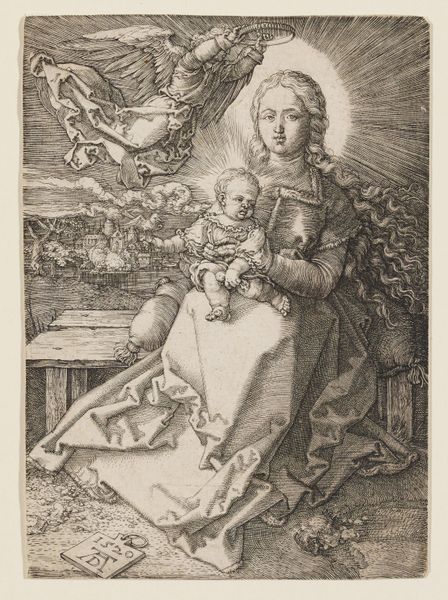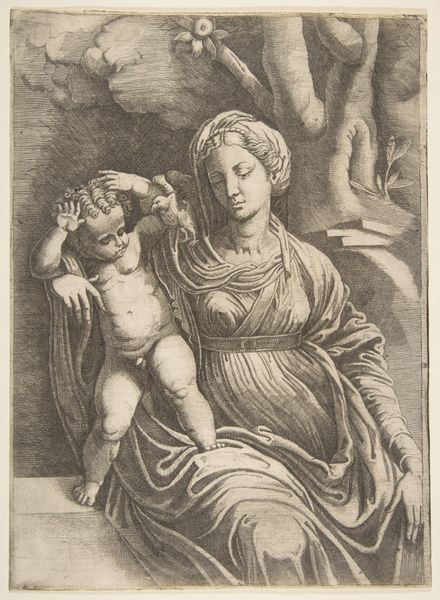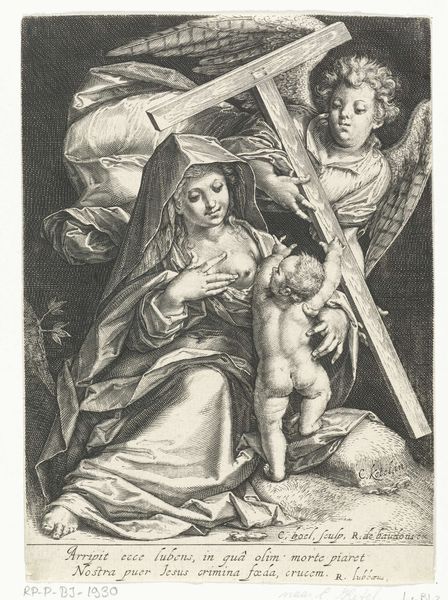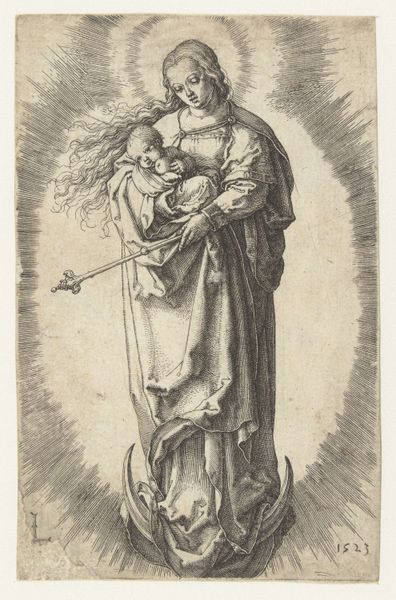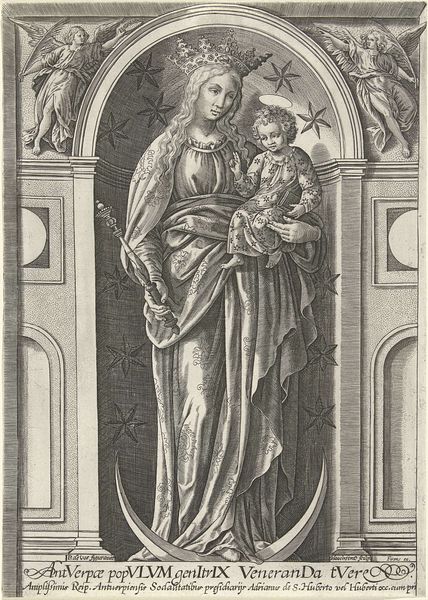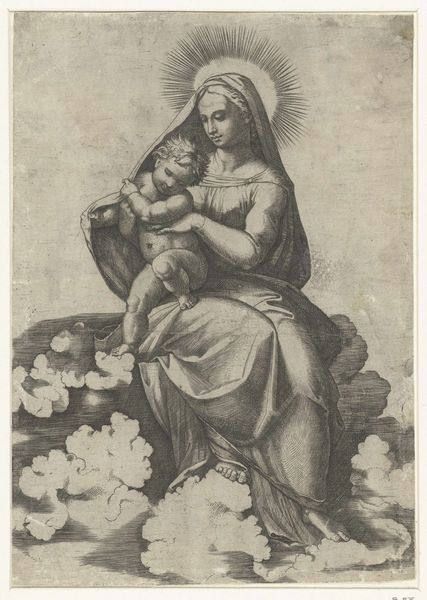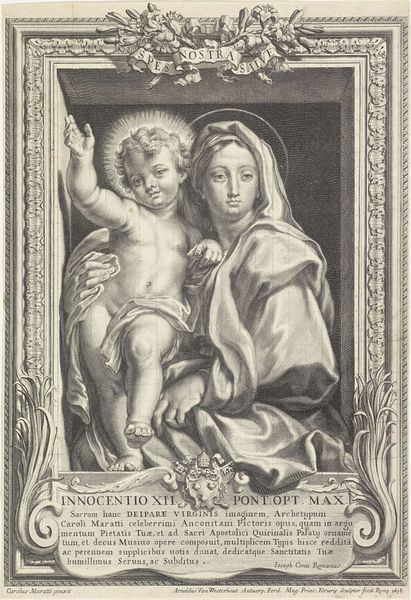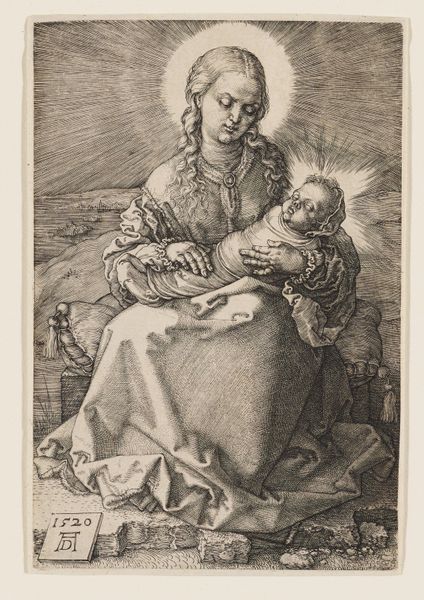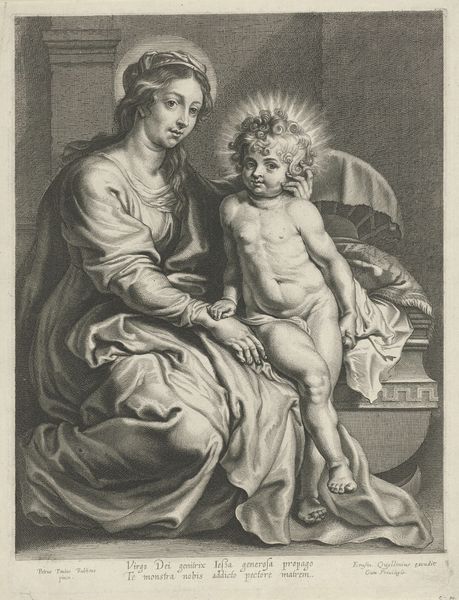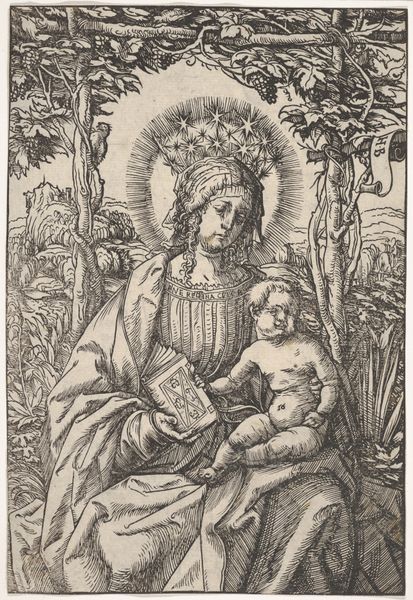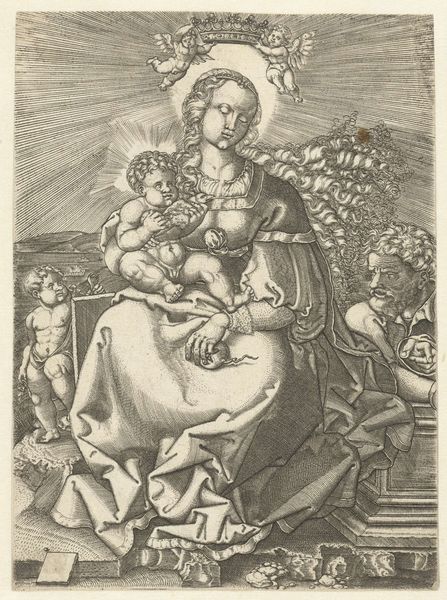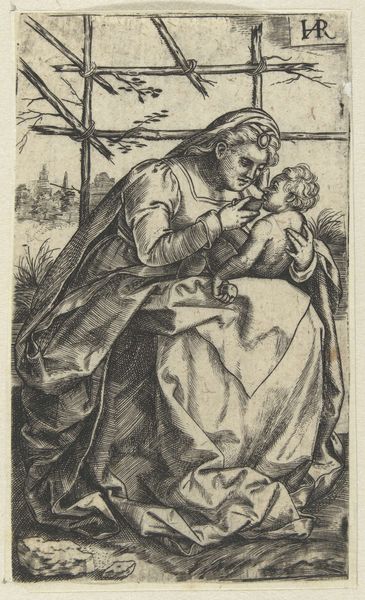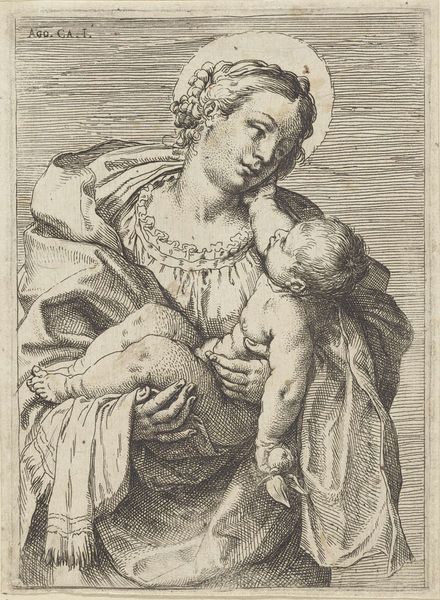
print, engraving
#
portrait
# print
#
figuration
#
line
#
northern-renaissance
#
engraving
Dimensions: height 75 mm, width 54 mm
Copyright: Rijks Museum: Open Domain
Editor: Here we have "Madonna and Child seated at the Foot of a Tree," a 1527 engraving by Heinrich Aldegrever, housed at the Rijksmuseum. The detail achieved through the lines is striking, yet the overall tone feels quite formal. What sociopolitical forces might have shaped this particular depiction? Curator: That’s a great observation. Looking at Aldegrever's Madonna, we need to unpack the Renaissance ideal of motherhood it presents, but also acknowledge the turbulent religious context of the Reformation. How do you see this image interacting with the rising Protestant critiques of Catholic iconography? Editor: It’s interesting; I see a simultaneous adherence to tradition and perhaps a subtle attempt to address emerging theological debates. The comparative austerity might be a response to criticisms of excessive ornamentation. Curator: Exactly. The relative simplicity, despite the intricate details, is key. Consider the role of women during the Reformation. While some women embraced new freedoms within Protestantism, the dominant narrative still largely confined them to domestic roles. Aldegrever’s Madonna is therefore working within multiple, sometimes conflicting, discourses surrounding female identity and religious devotion. What kind of statement do you think the choice to depict Mary seated, literally grounded, suggests? Editor: Perhaps it speaks to her accessibility, an attempt to bring her closer to the everyday believer? Curator: Precisely. This artwork prompts us to examine how shifting religious landscapes shaped the visual representation of core figures, impacting beliefs and perceptions of power and faith. Editor: This was incredibly helpful; thank you for drawing attention to the connection between the Reformation and how Mary is represented. Curator: It’s crucial to view these artworks not as isolated objects but as reflections of complex societal dialogues. Thank you for the insightful questions.
Comments
No comments
Be the first to comment and join the conversation on the ultimate creative platform.
